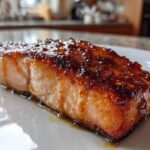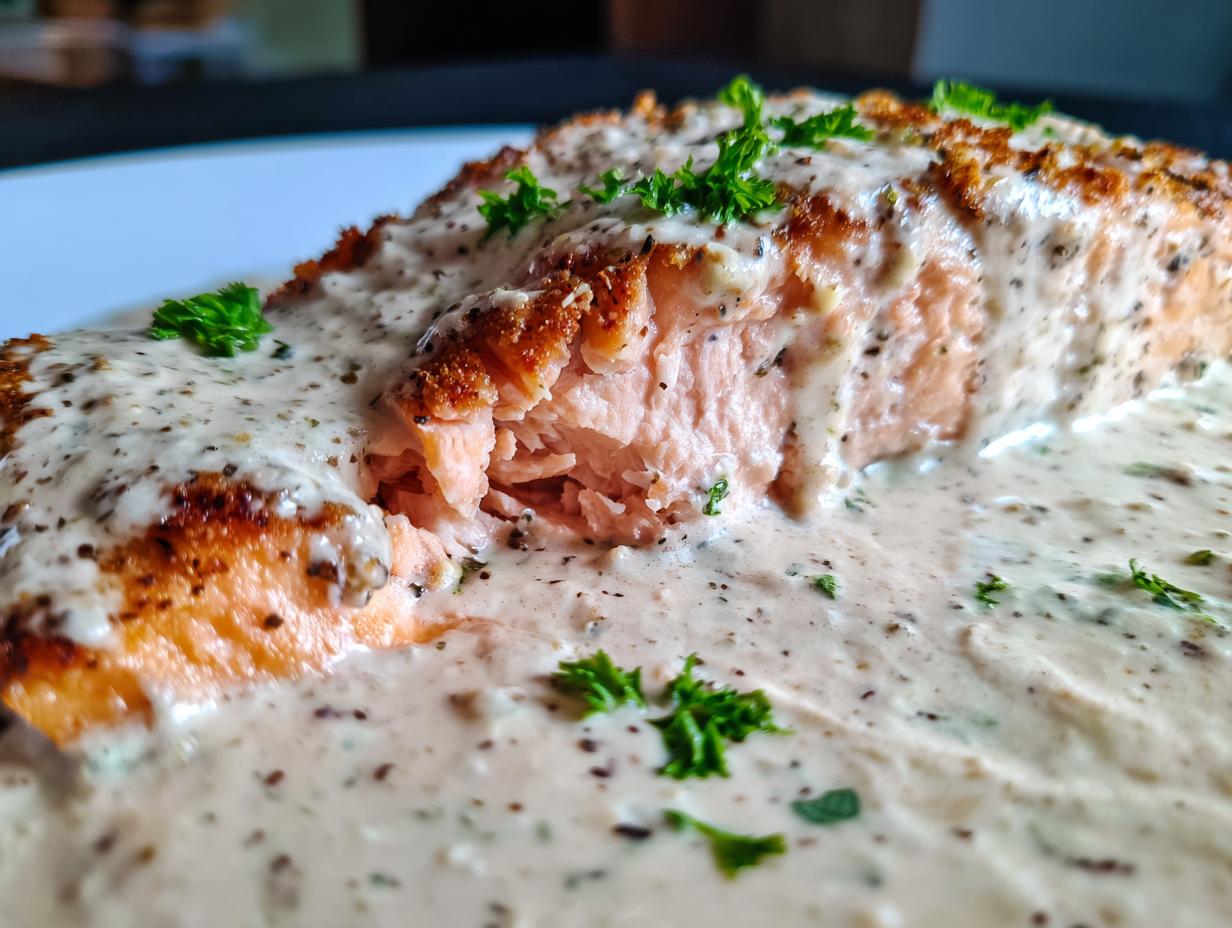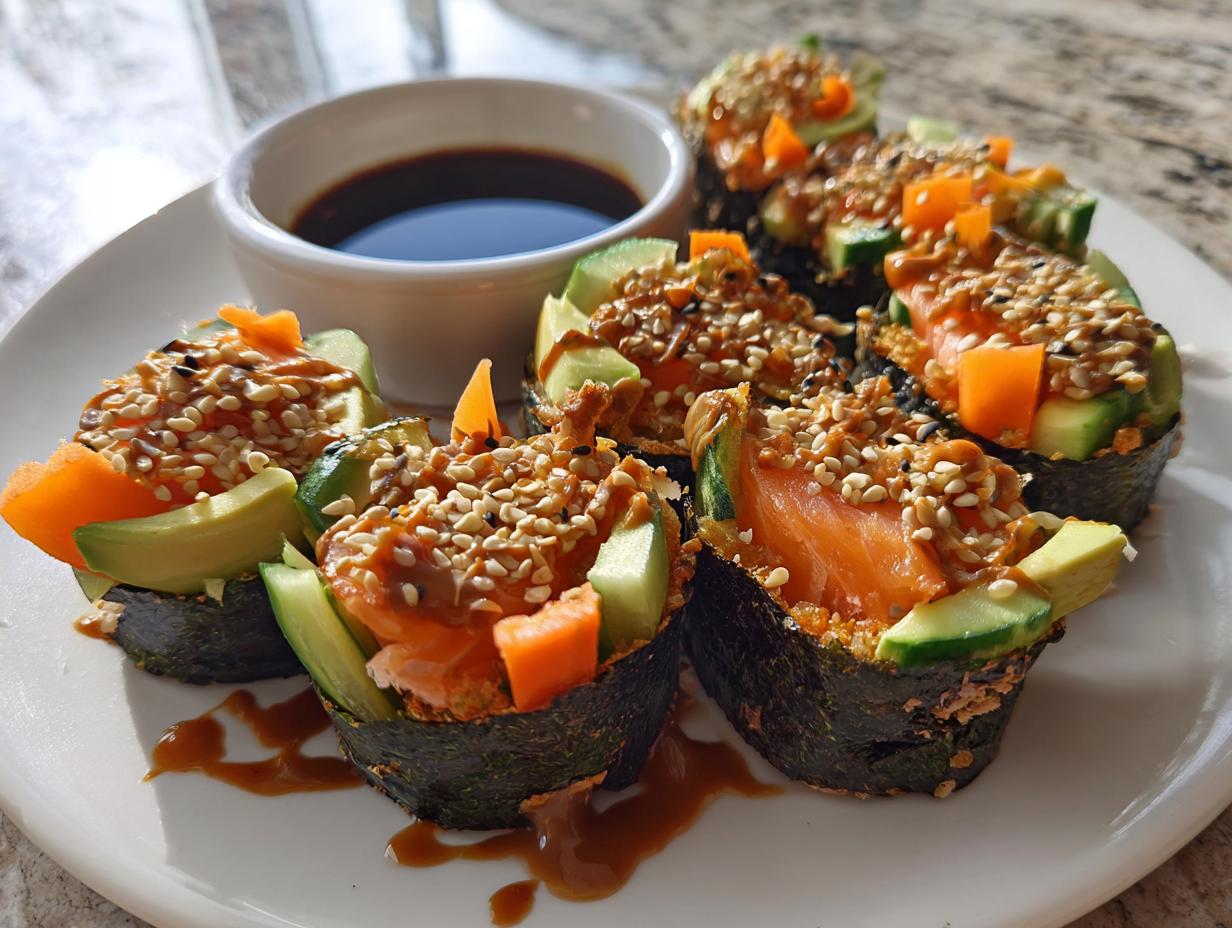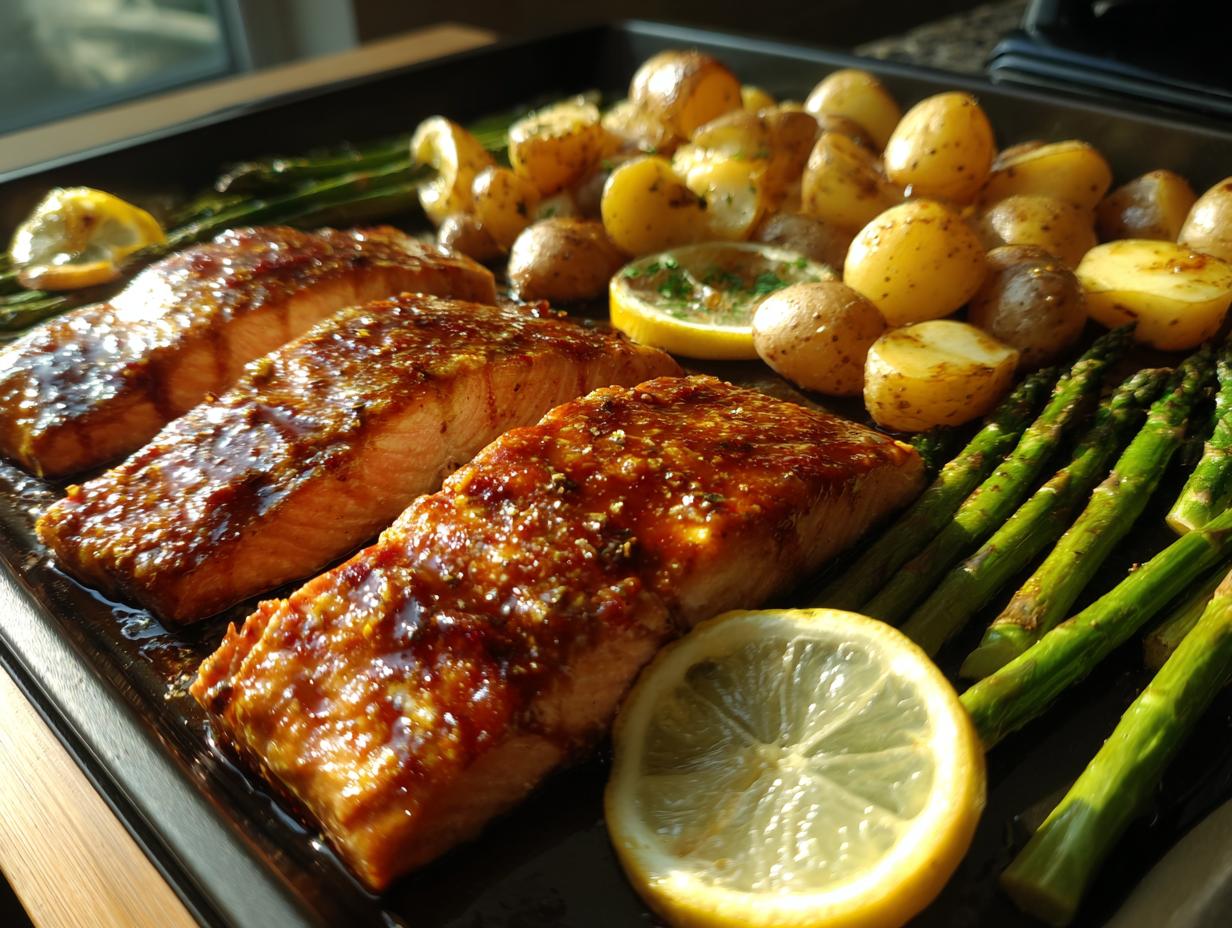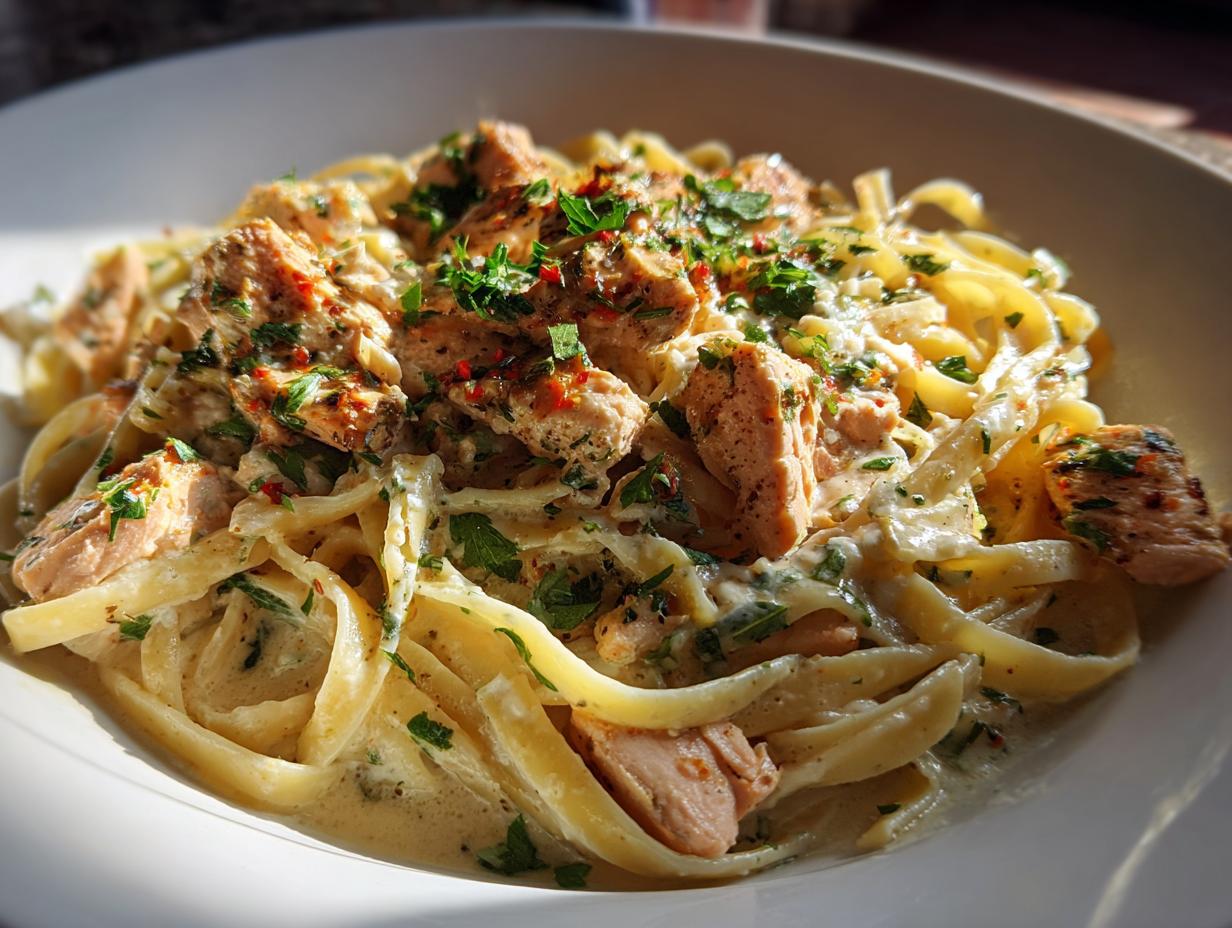I’ll never forget my first bite of miso glazed salmon in a tiny Tokyo restaurant – the perfect caramelized crust giving way to melt-in-your-mouth fish underneath. The owner chuckled at my wide-eyed reaction, then whispered “secret is in the miso paste” as I practically licked my plate clean. That magical combination of sweet, salty, and umami flavors stuck with me, and after years of tweaking, I’ve finally nailed the homemade version that tastes just as incredible.
What makes this miso glazed salmon so special? It’s that beautiful contrast between the crispy, sticky-sweet exterior and the tender, flaky fish inside – restaurant quality with about 15 minutes of active work. My friends always think I’ve slaved over this dish when I serve it, but honestly? The glaze comes together faster than you can preheat the oven.
This recipe keeps things simple with ingredients you can find anywhere (yes, even regular grocery stores carry miso paste now!). Just wait until you smell that incredible aroma filling your kitchen – it transports me right back to that little Tokyo spot every single time.
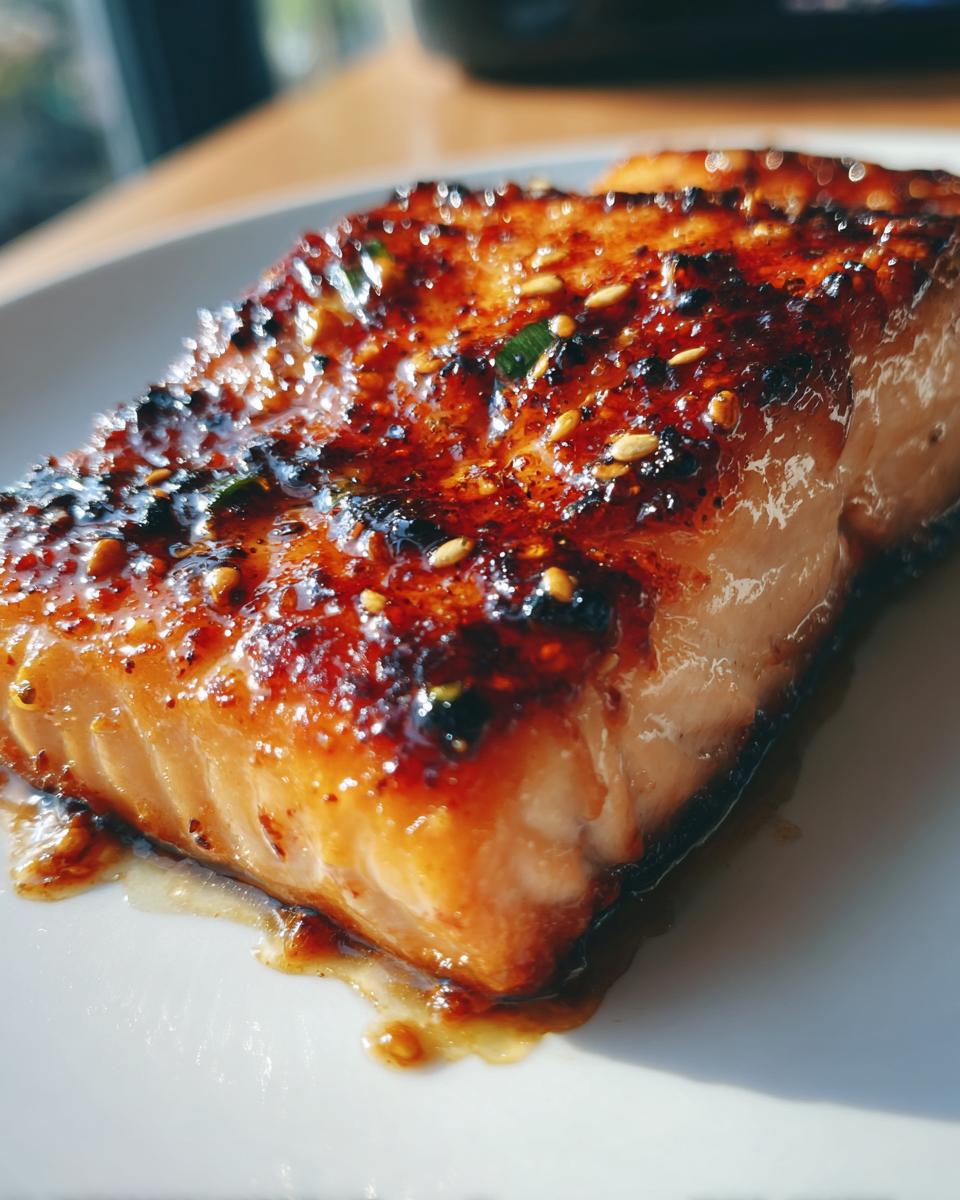
Why You’ll Love This Miso Glazed Salmon
Let me count the ways this recipe will become your new weeknight hero:
- Seriously fast: From fridge to table in under 30 minutes – faster than takeout!
- Umami bomb: That magical miso-honey combo creates flavors so deep you’ll want to lick the plate (no judgment).
- Healthy-ish indulgence: Packed with omega-3s but feels totally decadent with that glossy caramelized crust.
- Foolproof technique: My broiler trick ensures perfect browning without babysitting a skillet.
- Meal prep superstar: The glaze keeps for days, and leftover salmon makes killer rice bowls.
Honestly? The hardest part is waiting those last few broiling minutes while that incredible smell taunts you!
Ingredients for Perfect Miso Glazed Salmon
Here’s everything you’ll need to create that magical miso glaze and perfectly cooked salmon:
- 4 salmon fillets (6 oz each, skin-on for best texture)
- 3 tbsp white miso paste (packed measure – use the back of your spoon to press it into the tablespoon)
- 2 tbsp mirin (the real stuff, not just sweet cooking wine)
- 1 tbsp soy sauce (I use reduced-sodium to control saltiness)
- 1 tbsp honey (local if you’ve got it – the floral notes shine through)
- 1 tsp freshly grated ginger (none of that dried powder nonsense!)
- 1 garlic clove, minced (or pressed if you’re feeling lazy like me sometimes)
Ingredient Substitutions & Notes
Don’t stress if you’re missing something! Here are my approved swaps:
- No mirin? Mix 1 tbsp rice vinegar + 1 tsp sugar per tablespoon needed.
- Maple syrup works beautifully instead of honey – just reduce to 2 tsp since it’s sweeter.
- Red miso will work but gives a stronger, saltier flavor – use 2 tbsp instead of 3.
- Skinless salmon is fine, but you’ll miss that crispy texture contrast.
- Pre-minced ginger from a jar? Use 1/2 tsp – it’s more concentrated.
Pro tip: White miso (shiro miso) is milder and sweeter – perfect for glazes. Look for it near tofu in refrigerated sections!
Essential Equipment for Miso Glazed Salmon
You don’t need fancy gadgets for this recipe – just a few basics:
- Rimmed baking sheet (line it with parchment or foil for easy cleanup)
- Silicone brush (perfect for evenly coating every inch with that glorious glaze)
- Small mixing bowl (I use my favorite little Pyrex for whisking the marinade)
Optional but awesome: A cast iron skillet if you want to give the salmon a quick sear before baking for extra crispiness!
How to Make Miso Glazed Salmon Step-by-Step
Let me walk you through my foolproof method for creating that magical miso crust and perfectly flaky salmon – I promise it’s easier than it looks!
Preparing the Miso Glaze
First, grab a small bowl and whisk together the miso paste, mirin, and soy sauce until smooth – really work out any lumps! Then add the honey, ginger, and garlic, whisking vigorously until the glaze looks like thick caramel sauce. Taste a tiny bit (resist drinking it straight!) and adjust sweetness if needed.
Baking the Salmon Fillets
Position your oven rack in the upper third of the oven – this ensures even cooking and better browning later. Pat your salmon fillets completely dry (this helps the glaze stick!), then arrange them skin-side down on your prepared baking sheet. Using the silicone brush, slather each fillet generously with the miso glaze – don’t be shy! Bake at 400°F for about 12 minutes. Check doneness by gently flaking a thick part with a fork; it should separate easily but still look slightly translucent in the very center.
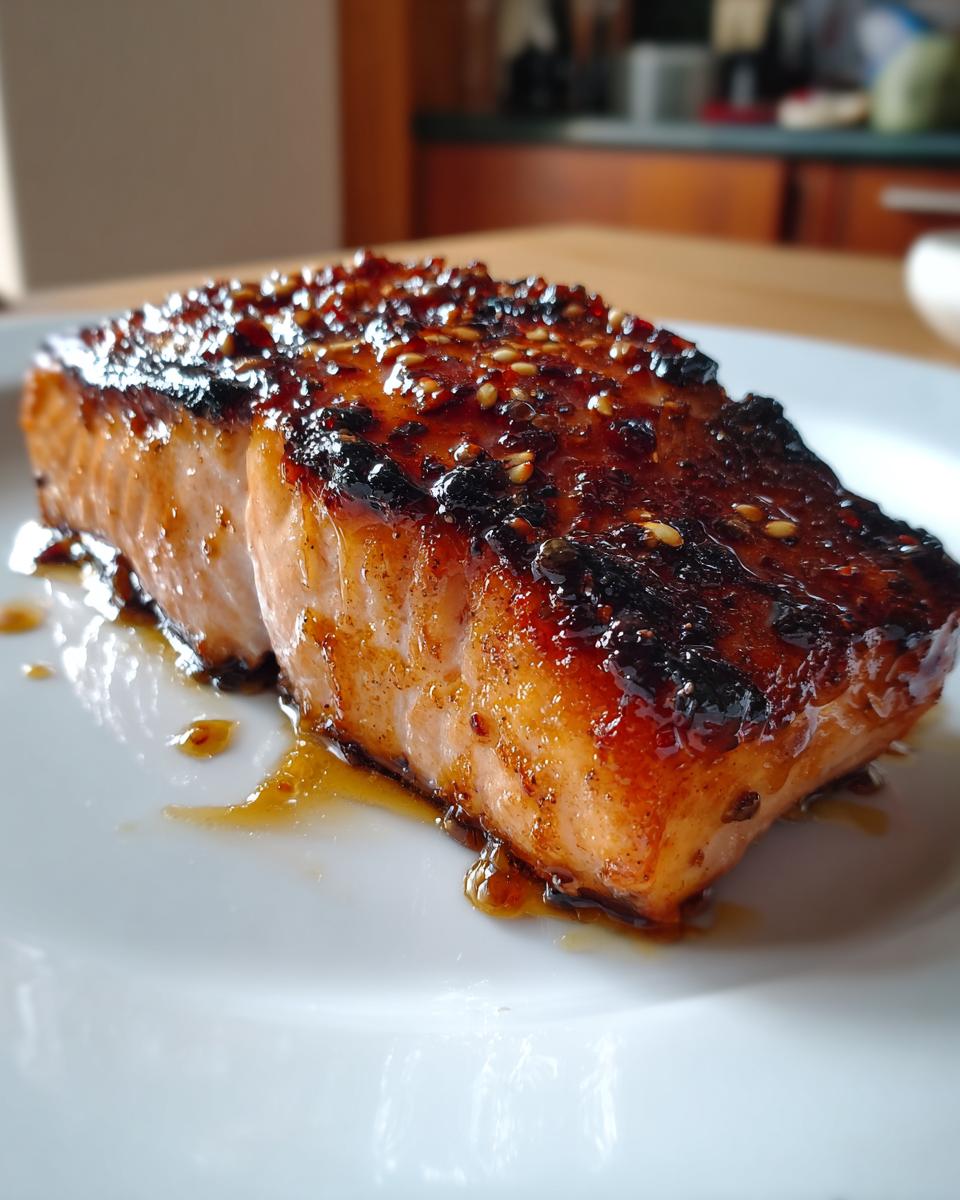
Achieving the Perfect Caramelization
Now the fun part! Switch your oven to broil and watch closely as the glaze bubbles and caramelizes – this only takes 1-2 minutes. Stand right by the oven because it goes from golden perfection to burnt disaster in seconds! You want that beautiful mahogany crust without crossing into charred territory.
Let the salmon rest for about 5 minutes before serving – this allows the glaze to set into that irresistible sticky-sweet coating. Trust me, this patience pays off in every glorious bite!
Pro Tips for Best Miso Glazed Salmon
After making this recipe more times than I can count, here are my hard-earned secrets for foolproof miso glazed salmon every single time:
- Dry that salmon! Patting fillets thoroughly with paper towels before glazing makes all the difference – moisture is the enemy of that perfect crust.
- Glaze thickness matters: Too thin and it disappears; too thick and it burns. Aim for a consistency that slowly drips off your spoon – like warm honey.
- Watch your broiler like a hawk: Oven broilers vary wildly – mine goes from golden to blackened in 30 seconds flat! Peek through the window constantly.
- Let it rest: Those 5 minutes after baking are crucial for the glaze to set into that signature sticky-sweet coating. I know it’s hard to wait!
- Extra caramelization trick: For restaurant-worthy results, baste with extra glaze during the last 2 minutes of baking before broiling.
Remember – even “mess ups” still taste amazing. Burnt a bit? Call it “extra caramelized.” Glaze too thin? Drizzle more on after baking. It’s all delicious!
Serving Suggestions for Miso Glazed Salmon
Oh, the possibilities! My absolute favorite way to serve this miso glazed salmon is over a steaming bed of jasmine rice – the fluffy grains soak up every drop of that glorious glaze. For veggies, I’m obsessed with quick sautéed bok choy or crispy roasted Brussels sprouts. When I want something fresh, a simple cucumber salad with rice vinegar hits the spot. And don’t forget the garnishes! Toasted sesame seeds and sliced green onions add that perfect finishing touch.
For special dinners, I’ll do a full Japanese-inspired spread with miso soup, pickled ginger, and maybe even some sushi rolls if I’m feeling ambitious. But honestly? Even just the salmon with rice and a squeeze of lemon makes me happy. It’s that good.
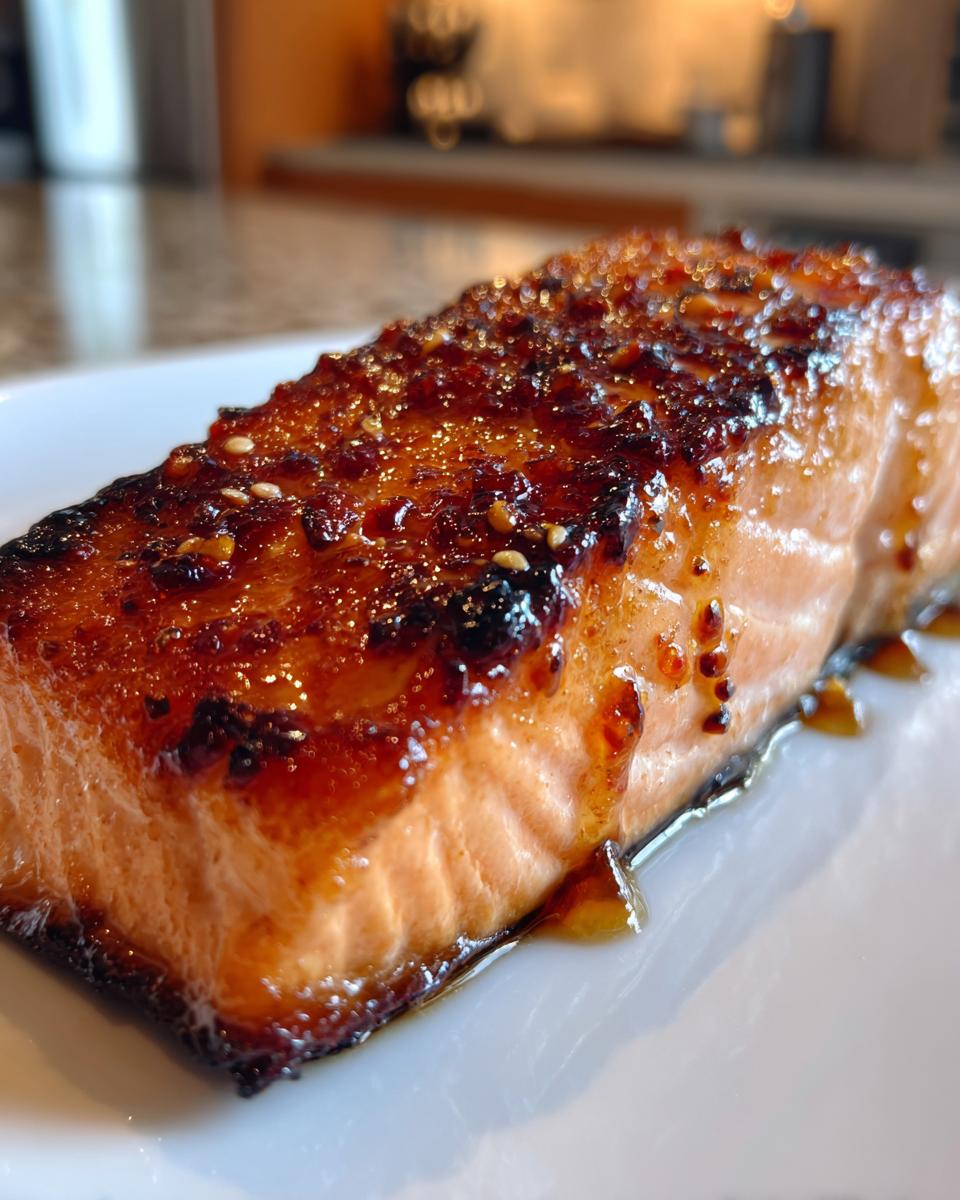
Storing and Reheating Leftover Miso Glazed Salmon
Okay, I know leftovers are rare with this dish (it’s that good!), but if you somehow have extra, here’s how to keep it tasting amazing: store cooled salmon in an airtight container in the fridge for up to 2 days. Want to freeze it? Wrap each piece individually in plastic wrap first – they’ll keep for a month. When reheating, my secret is using the oven at 300°F for about 10 minutes (don’t microwave – it makes the fish rubbery!). A quick 30-second broil at the end brings that glaze back to life!
Miso Glazed Salmon FAQs
I get asked these questions all the time – here’s everything you need to know about perfecting your miso glazed salmon:
Can I use red miso instead of white?
Yes, but go easy! Red miso is saltier and more intense – use just 2 tablespoons instead of 3, and maybe add an extra teaspoon of honey to balance it out. I prefer white miso for its milder, slightly sweet flavor that lets the salmon shine.
How long does the miso glaze keep?
The glaze alone stays good in your fridge for about 2 weeks in a sealed container – I always make a double batch to have on hand for quick weeknight meals. Just give it a good stir before using.
Can I make this with other fish?
Absolutely! Black cod (also called sablefish) is classic, but I’ve had great results with arctic char and even thick cuts of trout. Just adjust cooking times based on thickness.
Why is my glaze burning under the broiler?
Oven broilers are tricky beasts! If yours runs hot, try moving the rack down one notch or broiling for just 30-45 seconds. My other trick? Brush on an extra thin layer of glaze right before broiling rather than using the initial thick coat.
Can I grill the salmon instead?
You bet – just wait until the last few minutes to brush on the glaze so it doesn’t burn over direct heat. I like to do 3-4 minutes per side on medium-high, glaze, then finish with the lid closed for that perfect caramelization.
Miso Glazed Salmon Nutrition Information
Just a heads up – these numbers can vary based on your exact ingredients and brands (that honey difference adds up!). But generally, one 6oz serving of my miso glazed salmon contains about 320 calories, with 34g of that glorious protein we all love. It’s packed with omega-3s from the salmon too – what I call a win-win situation!
PrintMiso Glazed Salmon Recipe: 30-Minute Umami Perfection
Delicious miso glazed salmon with a perfect balance of sweet and savory flavors.
- Prep Time: 10 minutes
- Cook Time: 15 minutes
- Total Time: 25 minutes
- Yield: 4 servings 1x
- Category: Main Dish
- Method: Baking
- Cuisine: Japanese
- Diet: Low Lactose
Ingredients
- 4 salmon fillets (6 oz each)
- 3 tbsp white miso paste
- 2 tbsp mirin
- 1 tbsp soy sauce
- 1 tbsp honey
- 1 tsp grated ginger
- 1 clove garlic, minced
Instructions
- Preheat oven to 400°F (200°C).
- Whisk miso paste, mirin, soy sauce, honey, ginger, and garlic in a bowl.
- Place salmon fillets on a lined baking sheet.
- Brush each fillet generously with the miso glaze.
- Bake for 12-15 minutes until salmon flakes easily.
- Broil for 1-2 minutes for a caramelized top.
Notes
- For extra crispiness, pan-sear the salmon before glazing.
- Substitute maple syrup for honey if preferred.
- Serve with steamed rice and vegetables.
Nutrition
- Serving Size: 1 fillet
- Calories: 320
- Sugar: 8g
- Sodium: 800mg
- Fat: 14g
- Saturated Fat: 3g
- Unsaturated Fat: 9g
- Trans Fat: 0g
- Carbohydrates: 12g
- Fiber: 1g
- Protein: 34g
- Cholesterol: 85mg
